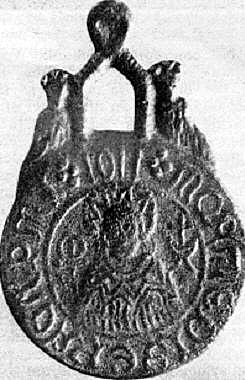|
costs18. He dismissed Henry Syer Cuming's findings
as "Foolscap tirade" and suggested that the matter be settled by
a forum of experts and interested parties19.
Charles Roach Smith reported on the trial for The
Gentleman's Magazine. Here he argued that the comparatively
late manufacture of the objects in the 16th century could
explain their anachronistic design. A forger, he explained,
would copy objects known to him, but these bore no resemblance
to any product of any period. It would also be impossible for a
forger to produce such a wide variety of objects20.
He challenged Henry Syer Cuming to prove him wrong, but,
inexplicably, Henry Syer Cuming withdrew from the debate.
At the end of 188 Charles Reed, the head of a London
printing company, exhibited some of the finds to the Society of
Antiquaries. The ensuing debate was unfavourable to the objects
and prompted Augustus Franks, the Director, to read a paper on
forgery at the next meeting'21. But nobody made
I8. B.L., Ad. Mss. 30297, item 276.
19. Ibid.
item 184: (see also 283 & 284).
20. October 1858 400-1.
|
any new investigations into the matter, and despite the
remonstrations of Charles Roach Smith, the debate petered out.
However, the press coverage of the trial gave the objects such
publicity that sales revived. It may not have been coincidental
that George Eastwood had moved his business to the Haymarket by
the start of 185922. Henry Syer Cuming claimed that
the Guildford trial was "A glorious victory'; as with so many
supposed victories, it is doubtful that there were any winners.
The matter rested until the start of 1861, when Charles Roach
Smith wrote an article on the finds for the fifth volume of his
Collectanea Antiqua. He feared that it might be litigious
to revive the debate, but he believed that the British
Archaeological Association owed George Eastwood compensation. He
argued that the objects dated from the reign of Queen Mary (from
their style of lettering), and had been imported from the
Continent to replace those articles of religious devotion that
has been destroyed
21. Proc Soc Ant Lond I ser
4 (1858) 241: 246-9
22. Gentleman's Magazine Feb. 1859 173.
|
|
Fig. 5: cock metal forgery. In
1869 Henry Syer Cuming bought five medallions of this design and
two
others for sevenpence.
(Photo: Chris Mycock)
|

